Ting-En Lin
ChARM: Character-based Act-adaptive Reward Modeling for Advanced Role-Playing Language Agents
May 29, 2025Abstract:Role-Playing Language Agents (RPLAs) aim to simulate characters for realistic and engaging human-computer interactions. However, traditional reward models often struggle with scalability and adapting to subjective conversational preferences. We propose ChARM, a Character-based Act-adaptive Reward Model, addressing these challenges through two innovations: (1) an act-adaptive margin that significantly enhances learning efficiency and generalizability, and (2) a self-evolution mechanism leveraging large-scale unlabeled data to improve training coverage. Additionally, we introduce RoleplayPref, the first large-scale preference dataset specifically for RPLAs, featuring 1,108 characters, 13 subcategories, and 16,888 bilingual dialogues, alongside RoleplayEval, a dedicated evaluation benchmark. Experimental results show a 13% improvement over the conventional Bradley-Terry model in preference rankings. Furthermore, applying ChARM-generated rewards to preference learning techniques (e.g., direct preference optimization) achieves state-of-the-art results on CharacterEval and RoleplayEval. Code and dataset are available at https://github.com/calubkk/ChARM.
Reverse Preference Optimization for Complex Instruction Following
May 28, 2025Abstract:Instruction following (IF) is a critical capability for large language models (LLMs). However, handling complex instructions with multiple constraints remains challenging. Previous methods typically select preference pairs based on the number of constraints they satisfy, introducing noise where chosen examples may fail to follow some constraints and rejected examples may excel in certain respects over the chosen ones. To address the challenge of aligning with multiple preferences, we propose a simple yet effective method called Reverse Preference Optimization (RPO). It mitigates noise in preference pairs by dynamically reversing the constraints within the instruction to ensure the chosen response is perfect, alleviating the burden of extensive sampling and filtering to collect perfect responses. Besides, reversal also enlarges the gap between chosen and rejected responses, thereby clarifying the optimization direction and making it more robust to noise. We evaluate RPO on two multi-turn IF benchmarks, Sysbench and Multi-IF, demonstrating average improvements over the DPO baseline of 4.6 and 2.5 points (on Llama-3.1 8B), respectively. Moreover, RPO scales effectively across model sizes (8B to 70B parameters), with the 70B RPO model surpassing GPT-4o.
OmniCharacter: Towards Immersive Role-Playing Agents with Seamless Speech-Language Personality Interaction
May 26, 2025Abstract:Role-Playing Agents (RPAs), benefiting from large language models, is an emerging interactive AI system that simulates roles or characters with diverse personalities. However, existing methods primarily focus on mimicking dialogues among roles in textual form, neglecting the role's voice traits (e.g., voice style and emotions) as playing a crucial effect in interaction, which tends to be more immersive experiences in realistic scenarios. Towards this goal, we propose OmniCharacter, a first seamless speech-language personality interaction model to achieve immersive RPAs with low latency. Specifically, OmniCharacter enables agents to consistently exhibit role-specific personality traits and vocal traits throughout the interaction, enabling a mixture of speech and language responses. To align the model with speech-language scenarios, we construct a dataset named OmniCharacter-10K, which involves more distinctive characters (20), richly contextualized multi-round dialogue (10K), and dynamic speech response (135K). Experimental results showcase that our method yields better responses in terms of both content and style compared to existing RPAs and mainstream speech-language models, with a response latency as low as 289ms. Code and dataset are available at https://github.com/AlibabaResearch/DAMO-ConvAI/tree/main/OmniCharacter.
Supervised Optimism Correction: Be Confident When LLMs Are Sure
Apr 10, 2025Abstract:In this work, we establish a novel theoretical connection between supervised fine-tuning and offline reinforcement learning under the token-level Markov decision process, revealing that large language models indeed learn an implicit $Q$-function for inference. Through this theoretical lens, we demonstrate that the widely used beam search method suffers from unacceptable over-optimism, where inference errors are inevitably amplified due to inflated $Q$-value estimations of suboptimal steps. To address this limitation, we propose Supervised Optimism Correction(SOC), which introduces a simple yet effective auxiliary loss for token-level $Q$-value estimations during supervised fine-tuning. Specifically, the auxiliary loss employs implicit value regularization to boost model confidence in expert-demonstrated responses, thereby suppressing over-optimism toward insufficiently supervised responses. Extensive experiments on mathematical reasoning benchmarks, including GSM8K, MATH, and GAOKAO, showcase the superiority of the proposed SOC with beam search across a series of open-source models.
OpenOmni: Large Language Models Pivot Zero-shot Omnimodal Alignment across Language with Real-time Self-Aware Emotional Speech Synthesis
Jan 08, 2025Abstract:Recent advancements in omnimodal learning have been achieved in understanding and generation across images, text, and speech, though mainly within proprietary models. Limited omnimodal datasets and the inherent challenges associated with real-time emotional speech generation have hindered open-source progress. To address these issues, we propose openomni, a two-stage training method combining omnimodal alignment and speech generation to develop a state-of-the-art omnimodal large language model. In the alignment phase, a pre-trained speech model is further trained on text-image tasks to generalize from vision to speech in a (near) zero-shot manner, outperforming models trained on tri-modal datasets. In the speech generation phase, a lightweight decoder facilitates real-time emotional speech through training on speech tasks and preference learning. Experiments demonstrate that openomni consistently improves across omnimodal, vision-language, and speech-language evaluations, enabling natural, emotion-rich dialogues and real-time emotional speech generation.
MMEvol: Empowering Multimodal Large Language Models with Evol-Instruct
Sep 09, 2024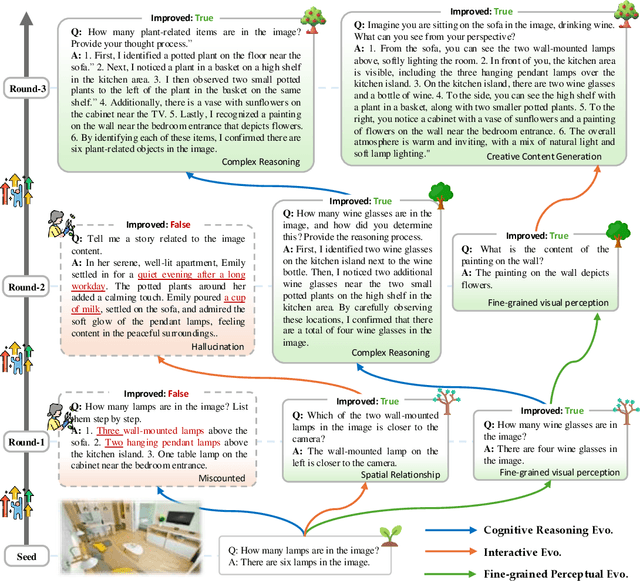

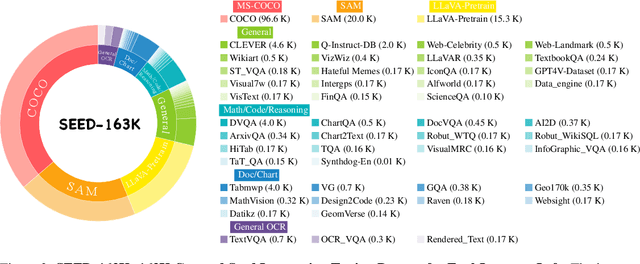

Abstract:The development of Multimodal Large Language Models (MLLMs) has seen significant advancements. However, the quantity and quality of multimodal instruction data have emerged as significant bottlenecks in their progress. Manually creating multimodal instruction data is both time-consuming and inefficient, posing challenges in producing instructions of high complexity. Moreover, distilling instruction data from black-box commercial models (e.g., GPT-4o, GPT-4V) often results in simplistic instruction data, which constrains performance to that of these models. The challenge of curating diverse and complex instruction data remains substantial. We propose MMEvol, a novel multimodal instruction data evolution framework that combines fine-grained perception evolution, cognitive reasoning evolution, and interaction evolution. This iterative approach breaks through data quality bottlenecks to generate a complex and diverse image-text instruction dataset, thereby empowering MLLMs with enhanced capabilities. Beginning with an initial set of instructions, SEED-163K, we utilize MMEvol to systematically broadens the diversity of instruction types, integrates reasoning steps to enhance cognitive capabilities, and extracts detailed information from images to improve visual understanding and robustness. To comprehensively evaluate the effectiveness of our data, we train LLaVA-NeXT using the evolved data and conduct experiments across 13 vision-language tasks. Compared to the baseline trained with seed data, our approach achieves an average accuracy improvement of 3.1 points and reaches state-of-the-art (SOTA) performance on 9 of these tasks.
DEEM: Diffusion Models Serve as the Eyes of Large Language Models for Image Perception
May 24, 2024



Abstract:The development of large language models (LLMs) has significantly advanced the emergence of large multimodal models (LMMs). While LMMs have achieved tremendous success by promoting the synergy between multimodal comprehension and creation, they often face challenges when confronted with out-of-distribution data. This is primarily due to their reliance on image encoders trained to encode images into task-relevant features, which may lead them to disregard irrelevant details. Delving into the modeling capabilities of diffusion models for images naturally prompts the question: Can diffusion models serve as the eyes of large language models for image perception? In this paper, we propose DEEM, a simple and effective approach that utilizes the generative feedback of diffusion models to align the semantic distributions of the image encoder. This addresses the drawbacks of previous methods that solely relied on image encoders like ViT, thereby enhancing the model's resilience against out-of-distribution samples and reducing visual hallucinations. Importantly, this is achieved without requiring additional training modules and with fewer training parameters. We extensively evaluated DEEM on both our newly constructed RobustVQA benchmark and another well-known benchmark, POPE, for object hallucination. Compared to the state-of-the-art interleaved content generation models, DEEM exhibits enhanced robustness and a superior capacity to alleviate model hallucinations while utilizing fewer trainable parameters, less pre-training data (10%), and a smaller base model size.
A Survey on Self-Evolution of Large Language Models
Apr 22, 2024



Abstract:Large language models (LLMs) have significantly advanced in various fields and intelligent agent applications. However, current LLMs that learn from human or external model supervision are costly and may face performance ceilings as task complexity and diversity increase. To address this issue, self-evolution approaches that enable LLM to autonomously acquire, refine, and learn from experiences generated by the model itself are rapidly growing. This new training paradigm inspired by the human experiential learning process offers the potential to scale LLMs towards superintelligence. In this work, we present a comprehensive survey of self-evolution approaches in LLMs. We first propose a conceptual framework for self-evolution and outline the evolving process as iterative cycles composed of four phases: experience acquisition, experience refinement, updating, and evaluation. Second, we categorize the evolution objectives of LLMs and LLM-based agents; then, we summarize the literature and provide taxonomy and insights for each module. Lastly, we pinpoint existing challenges and propose future directions to improve self-evolution frameworks, equipping researchers with critical insights to fast-track the development of self-evolving LLMs.
Masked Thought: Simply Masking Partial Reasoning Steps Can Improve Mathematical Reasoning Learning of Language Models
Mar 04, 2024Abstract:In reasoning tasks, even a minor error can cascade into inaccurate results, leading to suboptimal performance of large language models in such domains. Earlier fine-tuning approaches sought to mitigate this by leveraging more precise supervisory signals from human labeling, larger models, or self-sampling, although at a high cost. Conversely, we develop a method that avoids external resources, relying instead on introducing perturbations to the input. Our training approach randomly masks certain tokens within the chain of thought, a technique we found to be particularly effective for reasoning tasks. When applied to fine-tuning with GSM8K, this method achieved a 5% improvement in accuracy over standard supervised fine-tuning with a few codes modified and no additional labeling effort. Furthermore, it is complementary to existing methods. When integrated with related data augmentation methods, it leads to an average improvement of 3% improvement in GSM8K accuracy and 1% improvement in MATH accuracy across five datasets of various quality and size, as well as two base models. We further investigate the mechanisms behind this improvement through case studies and quantitative analysis, suggesting that our approach may provide superior support for the model in capturing long-distance dependencies, especially those related to questions. This enhancement could deepen understanding of premises in questions and prior steps. Our code is available at Github.
Fortify the Shortest Stave in Attention: Enhancing Context Awareness of Large Language Models for Effective Tool Use
Dec 07, 2023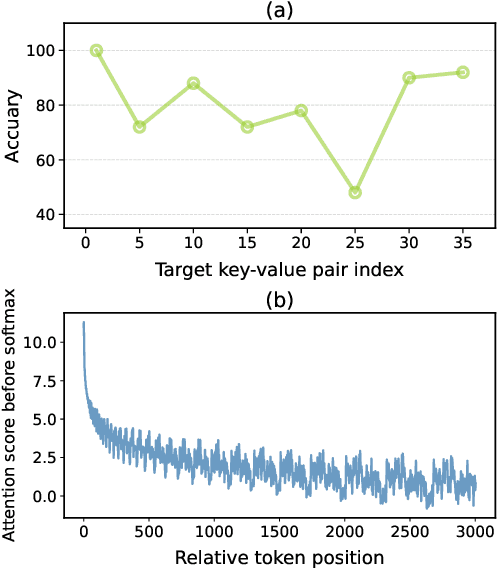
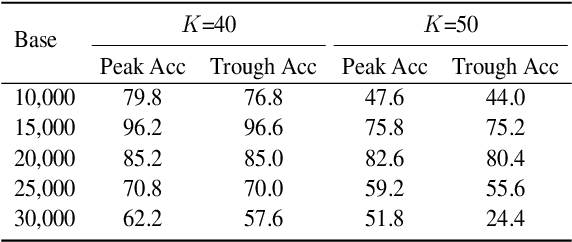
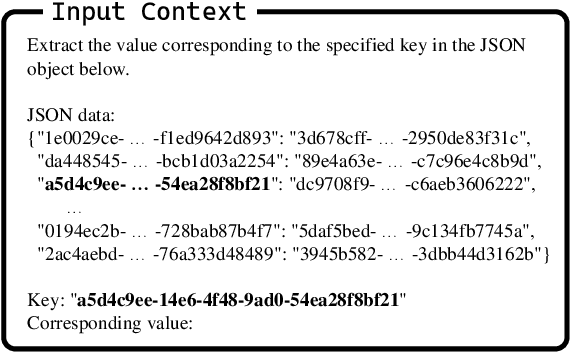
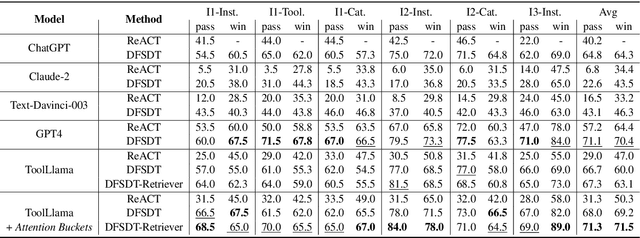
Abstract:Recent advancements in large language models (LLMs) have significantly expanded their functionality and skills as tool agents. In this paper, we argue that a waveform pattern in the model's attention allocation has an impact on the tool use performance, which degrades when the position of essential information hits the trough zone. To address this issue, we propose a novel inference method named Attention Buckets. This approach enables LLMs to handle context by conducting parallel processes, each featuring a unique RoPE angle base that shapes the attention waveform. Attention Buckets ensures that an attention trough of a particular process can be compensated with an attention peak of another run, reducing the risk of the LLM missing essential information residing within the attention trough. Our extensive experiments on the widely recognized tool use benchmark demonstrate the efficacy of our approach, where a 7B-parameter open-source model enhanced by Attention Buckets achieves SOTA performance on par with GPT-4.
 Add to Chrome
Add to Chrome Add to Firefox
Add to Firefox Add to Edge
Add to Edge